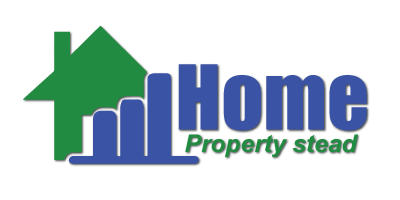When Emily and David stood in an empty plot of land on the outskirts of their city, it was hard to imagine that this barren stretch of dirt would one day become the home they’d always dreamed of. They had spent months pouring over floor plans, meeting with architects, and searching for the perfect location. But now, as they prepared to break ground, they realized that building a house from scratch wasn’t just a financial investment—it was an emotional journey.
For Emily, this was where their children would grow up, and family dinners and summer barbecues would be hosted. For David, it symbolized his hard work, a structure that would last for generations. However, a long and detailed process needed to be completed before they could hang the first family photo on the wall. They quickly discovered that building a house is an intricate process filled with milestones, decisions, and sometimes unexpected challenges.
This article will break down the step-by-step process of building a house, provide critical statistics on home construction in 2023, and offer tips on navigating each phase. Whether starting from scratch like Emily and David or just curious about the process, this guide will walk you through the critical stages of home construction.
- Pre-Construction: Planning and Preparation
The process of building a house begins long before the foundation is poured. This phase includes crucial steps such as purchasing land, designing the home, obtaining permits, and hiring a contractor or construction team.
Land Acquisition and Budgeting
Before any construction can take place, one of the first steps is purchasing land. On average, the cost of land for residential purposes in the U.S. was approximately $100,000 per acre in 2022, according to the National Association of Home Builders (NAHB). However, prices vary drastically based on location, zoning laws, and market demand.
Once the land is secured, setting a realistic budget is essential. According to the NAHB, the average cost to build a house in the U.S. in 2023 was approximately $300,000, excluding land costs. This figure will depend heavily on factors like square footage, the quality of materials, and regional construction costs.
Design and Architecture
The next step involves creating blueprints and floor plans with an architect or home designer. This stage is where your vision starts to take shape on paper. According to HomeAdvisor, homeowners typically spend around $2,500 to $8,000 on architectural fees, though this can vary depending on the complexity of the design.
Permits and Zoning
Before any physical work begins, homeowners must secure the necessary permits from local authorities. Building permits, which on average cost between $1,200 and $3,000, ensure that plans comply with local zoning laws, environmental regulations, and safety codes.
- Groundbreaking: Laying the Foundation
The groundbreaking ceremony is often a symbolic start to construction, but in practical terms, this is when the real work begins. The first step is to prepare the site and lay the foundation for the home.
Site Preparation
Site preparation involves clearing the land of debris, rocks, trees, and any structures in the way. Contractors will then level the ground to ensure it’s ready for the foundation. This step can cost anywhere between $3,000 and $7,000, depending on the site’s complexity and the property’s size.
Pouring the Foundation
The type of foundation required will depend on the house’s design and the local environment. For instance, in areas with colder climates, builders may need to dig deeper to protect the foundation from frost. The two most common types of foundations are concrete slabs and crawl spaces.
According to the NAHB, laying a foundation typically costs $8,000 to $15,000, depending on soil conditions and foundation type. Once the foundation is laid, it must be allowed to cure, a process that can take 2 to 4 weeks.
- Framing: The Skeleton of Your Home
Once the foundation is set, the next step is framing. This is when the house’s structure begins to take shape.
Building the Frame
Framing involves erecting the house’s “skeleton,” including walls, floors, and the roof. Most residential homes in the U.S. are framed with wood, though steel is an option for larger or more complex structures. Framing a home averages $20,000 to $50,000, depending on the house’s size and the design’s complexity.
Installing Windows and Doors
After the basic frame is completed, builders will install windows and doors, which further define the shape of the home and “close in” the structure. At this stage, the house is considered “dried in,” meaning it’s protected from the elements. Window and door installation can cost between $6,000 and $20,000, depending on the type and quality of materials used.
- Plumbing, Electrical, and HVAC: Bringing Your Home to Life
With the structure in place, the next phase involves installing essential systems such as plumbing, electrical wiring, heating, ventilation, and air conditioning (HVAC).
Plumbing and Electrical Work
Plumbers and electricians will install pipes and wiring throughout the house before the walls are finished. Plumbing installation typically costs around $10,000 to $15,000, while electrical work averages $8,000 to $12,000. It’s essential to work closely with your contractor to ensure that all necessary outlets, fixtures, and systems are accounted for during this stage.
HVAC Installation
Installing the heating and cooling systems is critical for modern homes, especially in areas with extreme temperatures. Depending on the system’s efficiency and complexity, HVAC installation costs can range from $7,000 to $12,000.
- Insulation and Drywall: Closing the Walls
With all the essential systems in place, the next phase involves insulating the house and installing drywall.
Insulation
Proper insulation is critical to maintaining energy efficiency and ensuring your home stays comfortable in different weather conditions. According to the U.S. Department of Energy, well-insulated homes can save homeowners up to 15% on heating and cooling costs. The cost of insulation averages around $1,500 to $3,500, depending on the size of the home and the type of insulation used.
Drywall Installation
Once the insulation is complete, drywall is installed to create the walls and ceilings. This process is relatively quick, with drywall installation costs averaging around $10,000 to $15,000.
- Interior and Exterior Finishes: Adding the Final Touches
The final stage of construction involves finishing the interior and exterior of the home.
Interior Finishes
Interior finishes include flooring, painting, cabinetry, and fixtures like sinks and faucets. These finishes vary widely based on materials and range from $20,000 to $80,000. Hardwood floors, for instance, are more expensive than carpet, while high-end countertops like granite or quartz can significantly increase the overall cost.
Exterior Finishes
Exterior work, including siding, painting, and landscaping, also occurs during this stage. Siding installation alone can cost between $7,000 and $20,000, while landscaping can range from a few thousand to tens of thousands, depending on the complexity.
- Final Inspection and Move-In: Bringing It All Together
Before you can move in, the home must pass final inspections to ensure it complies with local building codes and safety standards. Once approved, the house is ready for occupancy.
Final Walkthrough and Inspections
At this point, you’ll conduct a final walkthrough with your contractor to identify any last-minute fixes or adjustments that need to be made. Common issues include minor touch-ups on paint or adjusting fixtures.
The final cost of building a home in 2023 typically ranges between $300,000 and $500,000, depending on location, size, and materials. The entire process, from start to finish, generally takes between 7 to 12 months, though this can vary based on factors like weather, labor availability, and supply chain issues.
Conclusion: A House Becomes a Home
They were standing in their newly finished home, which felt like a dream for Emily and David. After months of planning, budgeting, and watching their vision come to life, they finally had the home they’d always dreamed of. Building a house may be complex and filled with challenges, but the reward at the end—a place to call your own—is well worth the effort.
If you’re considering building a home, understanding each step and working with experienced professionals can help ensure your project stays on track and within budget.











